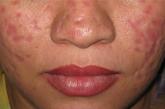Article

Common Hair Disorders
- Author:
- Rita Pichardo-Geisinger, MD
As part of our commitment to resident education, Cutis is excited to offer this monthly section with board-relevant, easy-to-review...
Article

Sexually Transmitted Diseases
- Author:
- Rita Pichardo-Geisinger, MD
As part of our commitment to resident education, Cutis is excited to offer this monthly section with board-relevant, easy-to-review...
Article

Vulvar Diseases, Part 2
- Author:
- Rita Pichardo-Geisinger, MD
As part of our commitment to resident education, Cutis is excited to offer this monthly section with board-relevant, easy-to-review...
Article

Dermatoses of Pregnancy
- Author:
- Rita Pichardo-Geisinger, MD
As part of our commitment to resident education, Cutis is excited to offer this monthly section with board-relevant, easy-to-review...
Article

Vulvar Diseases, Part 1
- Author:
- Rita Pichardo-Geisinger, MD
As part of our commitment to resident education, Cutis is excited to offer this monthly section with board-relevant, easy-to-review material....
Article

Medications in Dermatology, Part 2: Immunosuppressives
- Author:
- Rita Pichardo-Geisinger, MD
As part of our commitment to resident education, Cutis is excited to offer this monthly section with board-relevant, easy-to-review...
Quiz

Atrophic Erythematous Facial Plaques
- Author:
- William S. Kaufman, MD
- Elizabeth K. McNamara, MD
- Rita Pichardo-Geisinger, MD
A 26-year-old woman presented with a 2-year history of facial lesions that had gradually increased in size and number. Initially they were tender...
Article
Practice Question Answers: Deep Fungal Infections
- Author:
- Rita Pichardo-Geisinger, MD
This fact sheet served to review some of the most commonly tested deep fungal infections that should not be missed clinically.
Article

Deep Fungal Infections
- Author:
- Rita Pichardo-Geisinger, MD
As part of our commitment to resident education, Cutis is excited to offer this new monthly section with board-relevant, easy-to-review...
